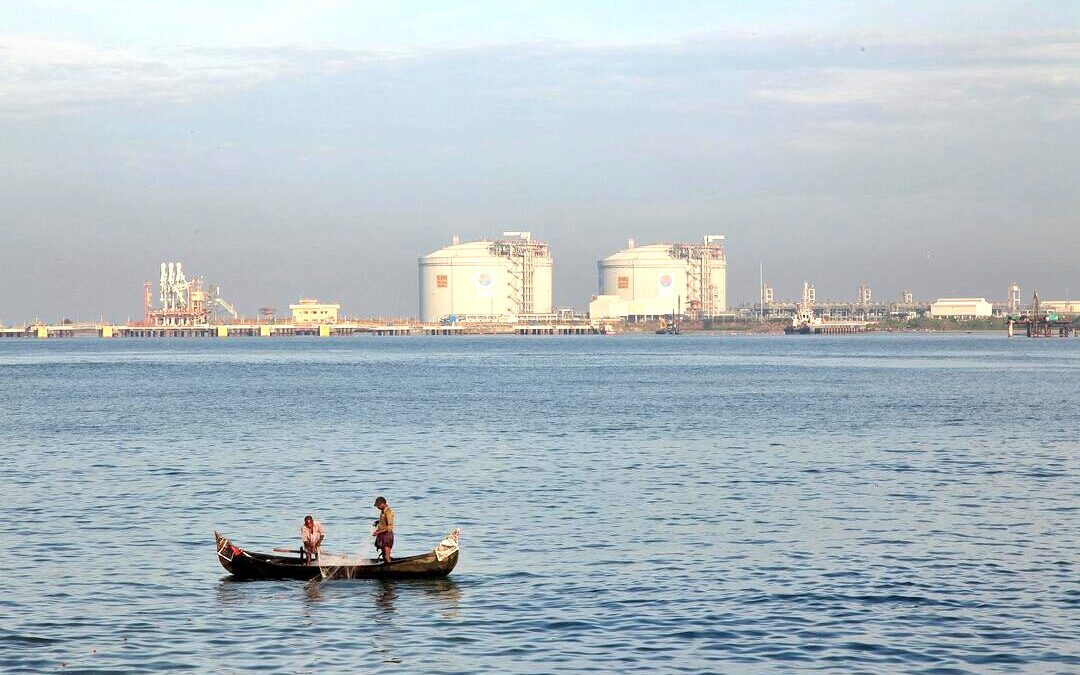LNG Supply Chain Emissions Reach 350MT CO2e in 2024, Urgent Cuts Needed: IEA
New IEA report reveals major emissions from LNG and outlines urgent, cost-effective pathways for reduction.
The liquefied natural gas supply chain generated an estimated 350 million tonnes of carbon dioxide equivalent in 2024, according to a new report released Thursday by the International Energy Agency, which calls for immediate, cost-effective measures to slash emissions across the sector.
The IEA analysis — based on extensive data from more than 350 upstream assets and nearly 7,000 LNG voyages annually — reveals that LNG has a higher average greenhouse gas intensity than previously understood, with emissions varying more than fivefold across different regions.
LNG Emissions Surpass Natural Gas
LNG emissions intensity averages just under 20 grams of CO2-eq per megajoule compared with 12 g CO2-eq/MJ for natural gas delivered via pipeline.
The highest intensities, exceeding 26 g CO2-eq/MJ, were found in some exporters in Africa and Southeast Asia, while Norway reported values under 6 g CO2-eq/MJ.
The majority of emissions arise from upstream production and the energy-intensive liquefaction process. Around 70 percent of GHGs emitted were carbon dioxide, with methane — a more potent, short-lived climate pollutant — accounting for 30 percent.
More than 2.5 Mt of methane escaped unburnt from production and processing sites in 2024, corresponding to an upstream methane emissions intensity of 0.6 percent, or 3.4 g CO2-eq/MJ. This ratio varied significantly, with the worst emitters producing over 100 times more methane than the best-performing operations.
Liquefaction, Shipping and Flaring Drive Emissions Further
Liquefaction — the process of supercooling gas to -162 degrees Celsius — remains the most energy-intensive phase, accounting for about 6 g CO2-eq/MJ.
Efficiency varies based on the type of technology, with older liquefaction plants and inefficient turbines contributing disproportionately.
Shipping LNG adds roughly 3.5 g CO2-eq/MJ, largely from fuel combustion and methane slip.
Methane emissions from shipping, particularly from older four-stroke dual-fuel engines, are significant, though newer vessels with advanced designs such as ME-GI and X-DF engines show promise for reducing emissions.
Regasification at import terminals contributes an additional 0.2 to 0.5 g CO2-eq/MJ.
Mitigation Is Feasible — and Often Profitable
The IEA finds that about 60 percent of the LNG sector’s total emissions — or 220 Mt CO2-eq annually — could be cut using existing technologies.
Roughly half of methane emissions can be abated at no net cost due to gas savings from leak prevention and operational improvements.
“Reducing methane emissions is the most important and cost-effective opportunity,” the report states. Leak detection and repair, vapor recovery units, and replacing gas-driven controllers are among the proven methods.
Electrifying LNG terminals and upstream production facilities could cut emissions by a further 110 Mt CO2-eq. Over 40 percent of gas production sites feeding LNG plants are already near electricity grids.
Price Tag: $100 Billion to Clean Up the Chain
The IEA estimates that deploying methane abatement, flaring reduction, electrification, and carbon capture and storage across viable facilities would require a global investment of about $100 billion.
This would add approximately $1 per million British thermal units to the delivered cost of LNG.
Retrofitting existing LNG infrastructure presents greater technical and financial challenges, whereas integrating emissions-reduction measures into new LNG projects during the design phase would significantly reduce costs.
Market Pressure Gaining Ground
Importing regions, such as the EU, are beginning to require emissions disclosures for natural gas imports, thereby accelerating demand for traceable, low-emission LNG.
Certification schemes and initiatives, such as the Coalition for LNG Emissions Abatement toward Net Zero, are emerging to drive transparency and accountability.
Still, measurement challenges persist. “Actual methane emissions levels are often significantly higher than reported,” the IEA warned, citing the variability and inaccuracy of company inventories and the importance of satellite-based monitoring.
Despite its emissions intensity, LNG still has a lower lifecycle GHG footprint than coal. The IEA estimates that electricity from LNG produces 40 percent fewer GHGs than coal-fired power.
However, the agency cautioned against using coal as the benchmark, urging producers and importers to minimize LNG’s environmental impact if it is to serve as a transitional fuel.
Also Read:
Global Energy Investment to Hit $3.3T in 2025 Amid Geopolitical Strains, IEA Says
Nirmal Menon
Related posts

Subscribe
Error: Contact form not found.


